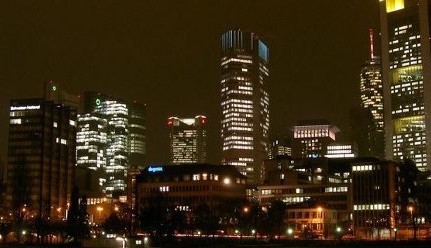The City as a Giant Energy Storage Facility
June 26, 2014
on
on

By 2050 the Germans aim to power their electricity system with 80% green resources. Using existing infrastructure and the right technology German engineer and board member of the regional utility Mainova Peter Birkner thinks that's possible by turning Frankfurt into an energy hub.
Energy Strategy
Birkner was one of the speakers at the Erasmus Energy Forum held in Rotterdam, The Netherlands June 19-20. He told the audience that since wind and solar are fluctuating resources, the challenge of 80% RES is not to install enough capacity but to have that capacity available at the right time. Birkner laid out his strategy to accomplish that for the Mainova energy system.
Mainova
Mainova supplies electricity, heat, gas and water to about one million people in Hessen and its surrounding states. It produces 40% of its electricity itself utilizing combined heat and power (CHP). The majority shareholder is the city of Frankfurt am Main.
Birkner wants to combine Mainova's three energy systems electricity, heat and gas to create one system with a high level of flexibility. “In the last years we have invested much money in our energy systems”, said Birkner. “Let us use the existing systems to fix the task that is defined by the Energiewende” (energy transition).
Output control
Mainova's power stations produce heat and electricity. The electricity, of course, feeds into the same grid but until recently there were no pipes to connect the generated heat. Consumer demand determined the output of each heat island and since heat production also generates electricity, Mainova was not in control of the output.
By connecting the power stations with heat pipes the system's flexibility increases. “This is a simple technology”, said Birkner. “Well, there are some difficulties because we have to cross the river Main but I will not get a Nobel prize for accomplishing this.”
Heat boilers
Adding more flexibility is the utilization of different kinds of CHP turbines where some generate more heat than electricity and vice versa. Heat boilers can also be added to the system for those hours in which electricity is cheaper than gas, to generate heat from electricity.
Birkner showed the audience a timeline displaying the steps to get to 80% RES in 2050. As the timeline progresses more technologies need to be added to the energy system. By 2030 Birkner will have 50% green electrons in his system. By then power-to-gas technology is needed to temporarily store energy in the system.
City as a storage
Birkner: “This is my dream, to have CHP and use gas in order to produce heat and electricity. I can add power-to-heat and power-to-gas. So I have a machine that can switch between those three media: power, heat and gas. I turn Frankfurt into an energy hub, the whole city is a storage.”
Image: wikimedia.org
Energy Strategy
Birkner was one of the speakers at the Erasmus Energy Forum held in Rotterdam, The Netherlands June 19-20. He told the audience that since wind and solar are fluctuating resources, the challenge of 80% RES is not to install enough capacity but to have that capacity available at the right time. Birkner laid out his strategy to accomplish that for the Mainova energy system.
Mainova
Mainova supplies electricity, heat, gas and water to about one million people in Hessen and its surrounding states. It produces 40% of its electricity itself utilizing combined heat and power (CHP). The majority shareholder is the city of Frankfurt am Main.
Birkner wants to combine Mainova's three energy systems electricity, heat and gas to create one system with a high level of flexibility. “In the last years we have invested much money in our energy systems”, said Birkner. “Let us use the existing systems to fix the task that is defined by the Energiewende” (energy transition).
Output control
Mainova's power stations produce heat and electricity. The electricity, of course, feeds into the same grid but until recently there were no pipes to connect the generated heat. Consumer demand determined the output of each heat island and since heat production also generates electricity, Mainova was not in control of the output.
By connecting the power stations with heat pipes the system's flexibility increases. “This is a simple technology”, said Birkner. “Well, there are some difficulties because we have to cross the river Main but I will not get a Nobel prize for accomplishing this.”
Heat boilers
Adding more flexibility is the utilization of different kinds of CHP turbines where some generate more heat than electricity and vice versa. Heat boilers can also be added to the system for those hours in which electricity is cheaper than gas, to generate heat from electricity.
Birkner showed the audience a timeline displaying the steps to get to 80% RES in 2050. As the timeline progresses more technologies need to be added to the energy system. By 2030 Birkner will have 50% green electrons in his system. By then power-to-gas technology is needed to temporarily store energy in the system.
City as a storage
Birkner: “This is my dream, to have CHP and use gas in order to produce heat and electricity. I can add power-to-heat and power-to-gas. So I have a machine that can switch between those three media: power, heat and gas. I turn Frankfurt into an energy hub, the whole city is a storage.”
Image: wikimedia.org
Read full article
Hide full article


Discussion (0 comments)